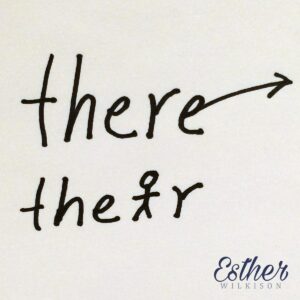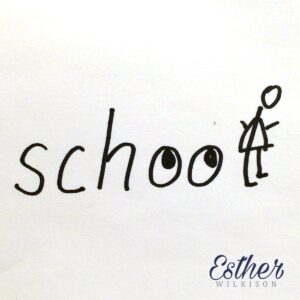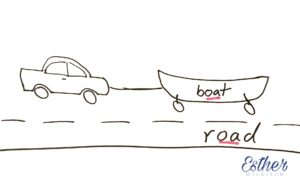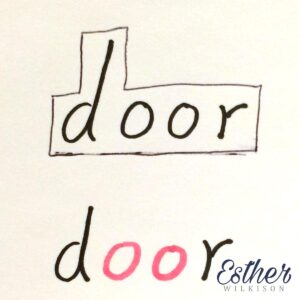Little did I know when my friend and I entered the lunch room that she was about to forever change how I learned to spell. Once we were seated with our food trays my friend pulled a napkin out of the dispenser and pulled a pen out of her purse.
“Esther, do you know what French doors look like?”
I nodded yes, but she drew them for me on the napkin to make sure.
“There are two door knobs.”
As she explained—she added the two circles to represent door knobs. I kept nodding. Then she added the d and the r.
“That,” she explained, “is how you spell door.”
My friend knew I needed to know this word because she had been helping me edit my chapters for a novel-writing class I was taking. I used the word door quite often and she got tired of marking it for correction.
I’m guessing you didn’t wait till your last year of graduate school to learn how to spell the word door. I didn’t wait intentionally. I just struggled so much with spelling that I gave up trying. But then, I learned the word door in a way that opened my eyes to a different approach that lead to a different learning outcome.
In just a minute, with just one picture, I learned in such a way that I never forgot. I might still misspell door when writing creatively. I’ve been known to misspell my own name under such circumstances. But when I focus on re-copying what I’ve written so that I am actually seeing the word, I have never again struggled with this word.
What my friend did for me that day I’ve now done with lots of words (and lots of students). Learning a word VISUALLY can mean coming up with a picture that helps focus on the spelling (bonus points if your drawing helps convey a meaning of the word as well).
Another visual-learning idea is to box the word to help you pay attention to the length of the word and where it has ascenders (like the line of the d that goes up) and descenders ( like g, p, and q).
Using color to focus on things like double letters is also a visual-learning idea. These ideas especially help those of us with visual processing problems because it helps us better see the individual parts of the word (the trees inside the forest).
How I wish my teachers would have used an art approach like this instead of having me copy the word over and over. I usually misspelled it the first time and then copied it wrong each time. While copying words encouraged me to hate writing and handwriting, it did little or nothing to help me learn to spell any word.
When I teach spelling, I like to have a spiral bound art book for each student. If I find a word they struggle to spell correctly, they and their partner (which might be me) come up with a visual to help them. Here are some examples.
 T-H-E-R-E has an arrow to help remind the learner that there has to do with a location—over there. T-H-E-I-R has to do with people so use a person for the letter i.
T-H-E-R-E has an arrow to help remind the learner that there has to do with a location—over there. T-H-E-I-R has to do with people so use a person for the letter i.
 School–you keep your eyes on the teacher in school.
School–you keep your eyes on the teacher in school.

Boat and road- both spelled with an ‘oa’ in the middle.
As effective as these visuals are, this is only one of the three doors through which a child or adult can learn accurate spelling. The most powerful way to learn how to spell the word door—or any word—is to use all three doors at once.
What words have you taught or learned through a visual approach? How has that worked for you?



Trackbacks/Pingbacks